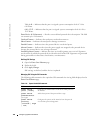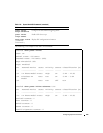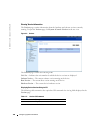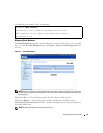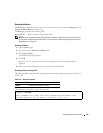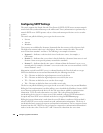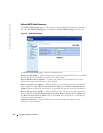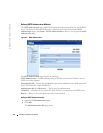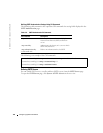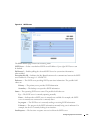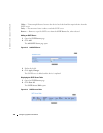
Configuring System Information 111
Using Anycast polling to get time information for synchronizing device time is preferred to using
Broadcast polling to get time information. However, this method is less secure than unicast polling,
because SNTP packets are accepted from SNTP servers that are not configured on the device.
Broadcast information is used when the server IP address is unknown. When a Broadcast message
is sent from an SNTP server, the SNTP client listens to the message. If Broadcast polling is enabled,
any synchronization information is accepted, even if it has not been requested by the device. This
is the least secure method.
The device retrieves synchronization information, either by actively requesting information or at
every poll interval. If Unicast, Anycast and Broadcast polling are enabled, the information is
retrieved in this order:
• Information from servers defined on the device is preferred. If Unicast polling is not enabled
or if no servers are defined on the device, the device accepts time information from any SNTP
server that responds.
• If more than one Unicast device responds, synchronization information is preferred from the
device with the lowest stratum.
• If the servers have the same stratum, synchronization information is accepted from the SNTP
server that responded first.
MD5 (Message Digest 5) Authentication safeguards device synchronization paths to SNTP servers.
MD5 is an algorithm that produces a 128-bit hash. MD5 is a variation of MD4, and increases MD4
security. MD5 verifies the integrity of the communication, authenticates the origin of the
communication.
To open the SNTP page, click
System
→
SNTP
in the tree view to open the
SNTP
page.




